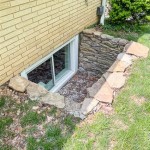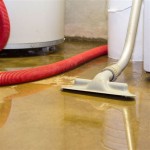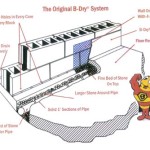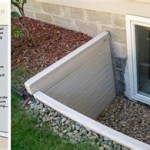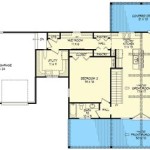What Is The Ideal Humidity In A Finished Basement?
Maintaining the correct humidity level in a finished basement is crucial for both the comfort of the occupants and the preservation of the building structure and its contents. Humidity, defined as the amount of moisture in the air, can significantly impact the indoor environment. Too much humidity fosters mold growth and creates a breeding ground for allergens, while too little humidity can lead to discomfort and potential damage to wooden structures and furnishings. Understanding the ideal humidity range for a finished basement and implementing strategies to maintain it is essential for a healthy and comfortable living space.
The ideal humidity range for a finished basement typically falls between 30% and 50%. This range is generally considered comfortable for most people and helps to inhibit the growth of mold and mildew. Relative humidity (RH) is the most common metric used to measure humidity levels. It represents the amount of moisture in the air compared to the maximum amount of moisture the air can hold at a given temperature. Monitoring RH levels regularly is vital for proactively addressing any humidity issues that may arise within the basement environment.
Factors Influencing Basement Humidity
Several factors contribute to humidity levels in a finished basement. These factors can be broadly categorized into external and internal sources. Understanding these sources is the first step in controlling and managing humidity effectively.
External Sources: One of the primary external factors affecting basement humidity is the surrounding soil. Soil naturally contains moisture, and this moisture can seep into the basement through the foundation walls and floor. This process is exacerbated during periods of heavy rainfall or snowmelt, as the soil becomes saturated with water. Inadequate drainage around the foundation of the house can further contribute to moisture intrusion. Improperly sloped landscaping or clogged gutters can lead to water pooling near the foundation, increasing the risk of water seepage into the basement.
Another external factor is the climate itself. Regions with high average humidity levels will naturally experience higher humidity in basements, particularly during warmer months. The groundwater levels near the property can also play a role. High groundwater levels can exert hydrostatic pressure on the foundation, forcing moisture through cracks and porous materials.
Internal Sources: Internal sources within the basement itself can also contribute to humidity levels. These can include everyday activities such as showering, cooking, and even breathing. While these activities may have a smaller impact compared to external sources, they can still contribute to overall humidity levels, especially in poorly ventilated basements. Leaks from plumbing fixtures, such as pipes, washing machines, or hot water heaters, can introduce significant amounts of moisture into the basement environment. These leaks can often go unnoticed for extended periods, leading to elevated humidity levels and potential water damage. Similarly, condensation forming on cold surfaces, such as pipes or concrete walls, can release moisture into the air.
The materials used in the basement's construction and finishing also influence humidity. Concrete, being a porous material, can absorb and release moisture over time. Carpeting and other absorbent materials can trap moisture, further contributing to humidity levels. Inadequate ventilation is a major contributing factor to high humidity. Without proper airflow, moisture becomes trapped, leading to elevated humidity levels and the potential for mold growth.
The Impact of High Humidity and Low Humidity
Maintaining the correct humidity level in a finished basement is essential because both excessively high and excessively low humidity can cause various problems.
High Humidity: High humidity levels in a finished basement create a conducive environment for mold and mildew growth. Mold thrives in damp, poorly ventilated areas and can quickly spread throughout the basement, affecting walls, ceilings, carpets, and furniture. Mold not only damages property but also poses significant health risks, triggering allergies, asthma, and other respiratory problems. Musty odors are often a telltale sign of mold growth. High humidity can also lead to condensation on surfaces, further exacerbating moisture-related issues. Condensation can damage painted surfaces, warp wooden structures, and promote corrosion of metal components. Additionally, high humidity provides an ideal breeding ground for dust mites, which are common allergens that can worsen respiratory conditions. Clothing, books, and other stored items are also susceptible to damage from mold and mildew in high-humidity environments.
Low Humidity: While less common in basements, excessively low humidity can also present problems. Low humidity can cause discomfort, leading to dry skin, irritated eyes, and sore throats. It can also dry out wooden furniture, floors, and trim, causing them to crack and warp. This is particularly problematic for antique furniture and musical instruments, which are sensitive to changes in humidity. Dry air can also increase static electricity, leading to unpleasant shocks. In addition, low humidity can exacerbate respiratory problems such as asthma and bronchitis, as the dry air can irritate the airways.
Strategies for Controlling Basement Humidity
Effectively controlling humidity in a finished basement requires a multifaceted approach, addressing both external and internal sources of moisture. Implementing the following strategies can help maintain the ideal humidity range and prevent moisture-related problems.
Improve Drainage: Ensuring proper drainage around the foundation is crucial for preventing water from seeping into the basement. This involves ensuring that the landscaping slopes away from the house, directing water away from the foundation. Cleaning gutters and downspouts regularly is also essential to prevent clogs and ensure that rainwater is properly channeled away from the building. Installing a French drain—a perforated pipe buried in gravel—around the perimeter of the foundation can effectively divert groundwater away from the basement walls. A sump pump, located in a sump pit, can be used to pump out any water that accumulates around the foundation, further safeguarding against water intrusion.
Seal Cracks and Foundation Walls: Inspecting the foundation walls for cracks and sealing them promptly can prevent moisture from entering the basement. Small cracks can be sealed with caulk or epoxy, while larger cracks may require professional repair. Applying a waterproof sealant to the interior or exterior of the foundation walls can create a barrier against moisture penetration. This sealant should be specifically designed for use on concrete and should be applied according to the manufacturer's instructions. Consider using a vapor barrier on the walls, especially if you are finishing the basement. This will help to prevent moisture from passing through the walls and into the finished space.
Improve Ventilation: Adequate ventilation is essential for removing excess moisture from the basement. Opening windows, when the weather permits, can help to circulate air and reduce humidity. However, this is only effective when the outdoor humidity is lower than the indoor humidity. Installing exhaust fans in bathrooms and laundry rooms can help to remove moisture generated by showering, bathing, and washing clothes. A dehumidifier is often the most effective way to control humidity in a basement. Dehumidifiers work by extracting moisture from the air and collecting it in a reservoir. Choose a dehumidifier with a capacity appropriate for the size of the basement. Regularly empty the dehumidifier's reservoir and clean the unit to ensure optimal performance. Consider installing a whole-house dehumidifier, which can be integrated into the home's HVAC system for more consistent humidity control. Ensure proper airflow within the basement by keeping doorways open and avoiding overcrowding with furniture and stored items.
Address Plumbing Leaks: Regularly inspect plumbing fixtures and pipes for leaks. Repair any leaks promptly to prevent moisture from accumulating in the basement. Consider insulating cold water pipes to prevent condensation from forming. Ensure that washing machines and other appliances that use water are properly connected and leak-free. Install water leak detectors near water-using appliances to alert you to potential leaks early on.
Use Moisture-Resistant Materials: When finishing a basement, choose moisture-resistant materials for flooring, walls, and ceilings. Opt for materials such as ceramic tile, vinyl flooring, or engineered wood flooring, which are less susceptible to moisture damage than solid wood or carpeting. Use moisture-resistant drywall or cement board for walls and ceilings. Consider using closed-cell spray foam insulation, which is highly effective at preventing moisture from penetrating walls. Avoid using organic materials, such as wood paneling or wallpaper, in areas prone to moisture.
By addressing these factors and implementing appropriate strategies, one can maintain the ideal humidity level in a finished basement, creating a more comfortable and healthy living environment while protecting the structure and its contents from moisture-related damage.

Here Is The Ideal Humidity For Your Finished Basement

Basement Humidity Levels Variations Impacts And Controling

Basement Humidity Levels Variations Impacts And Controling

The Perfect Basement Humidity Level Tips To Prevent Moisture

Here Is The Ideal Humidity For Your Finished Basement

Basement Humidity Levels Variations Impacts And Controling
What Is The Ideal Humidity For A Finished Basement

Basement Humidity Levels Variations Impacts And Controling

How To Achieve An Ideal Basement Humidity Of 30 50

Basement Humidity Levels Variations Impacts And Controling
Related Posts

